Just last week I took my class to the Australian National Wildlife Collection at Gungahlin CSIRO in Canberra.
Every described bird, mammal, reptile and amphibian is there. We found out that there are three different ways to preserve animals:
Skins: where animals are basically emptied out and stuffed with cotton wool ! However, it is a bit more detailed than that. The organs, big muscles and some bones, and the brain and eyes are removed. The idea is to have very little tissue that will rot. What is left will just dry out. Then carefully stuff it with cotton wool so that the shape is the same as the live animal. Sew it up and arrange the animal so when it dried it looks as normal as possible. To achieve this simply wrap the body in light fabric until it is dry.

a female satin bower bird drying after being preserved as a skin
All birds are kept in a climate controlled room inside huge metal cabinets, each with drawers for smaller birds or shelves for larger birds. It was quite cold in that room.
Every specimen has a tag which describes its common name, scientific name, where and when it was found, and a description of its 'soft parts' (colour, texture etc) because after death these things are different.
The room housing the spirit collection was very, very cold, but that was because it was very, very cold outside. (Remember this is Canberra in May. It was 2.5 degrees as I was driving to work and there had been a frost.) The air in this room is circulated constantly with the outside air to prevent any alcohol fumes building up and causing an explosion. that would totally destroy the whole collection! Specimen bottles were kept on shelves in compactor cabinets.
Have you ever thought about the drawings in Field Guides for identification of wildlife? Artists visit the collection and draw from real animals.
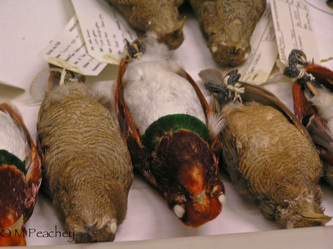
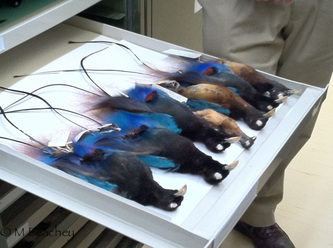

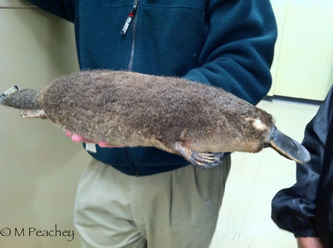
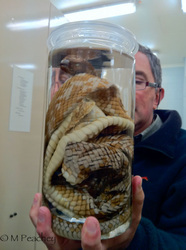
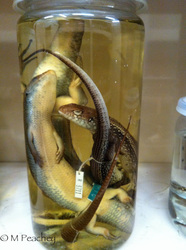
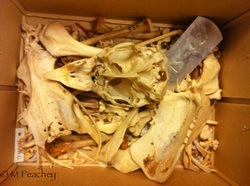
 RSS Feed
RSS Feed